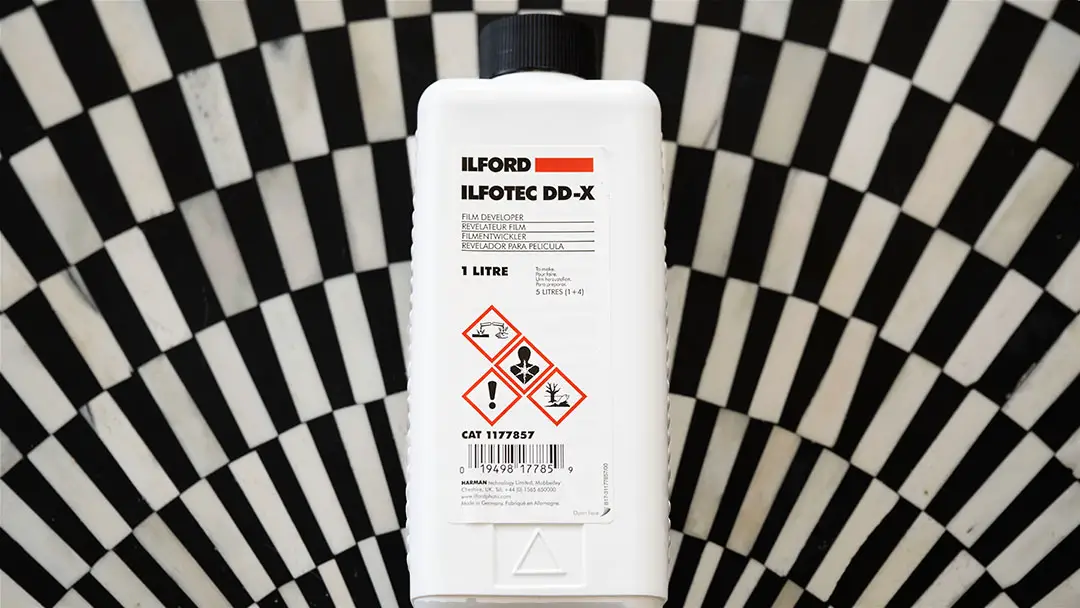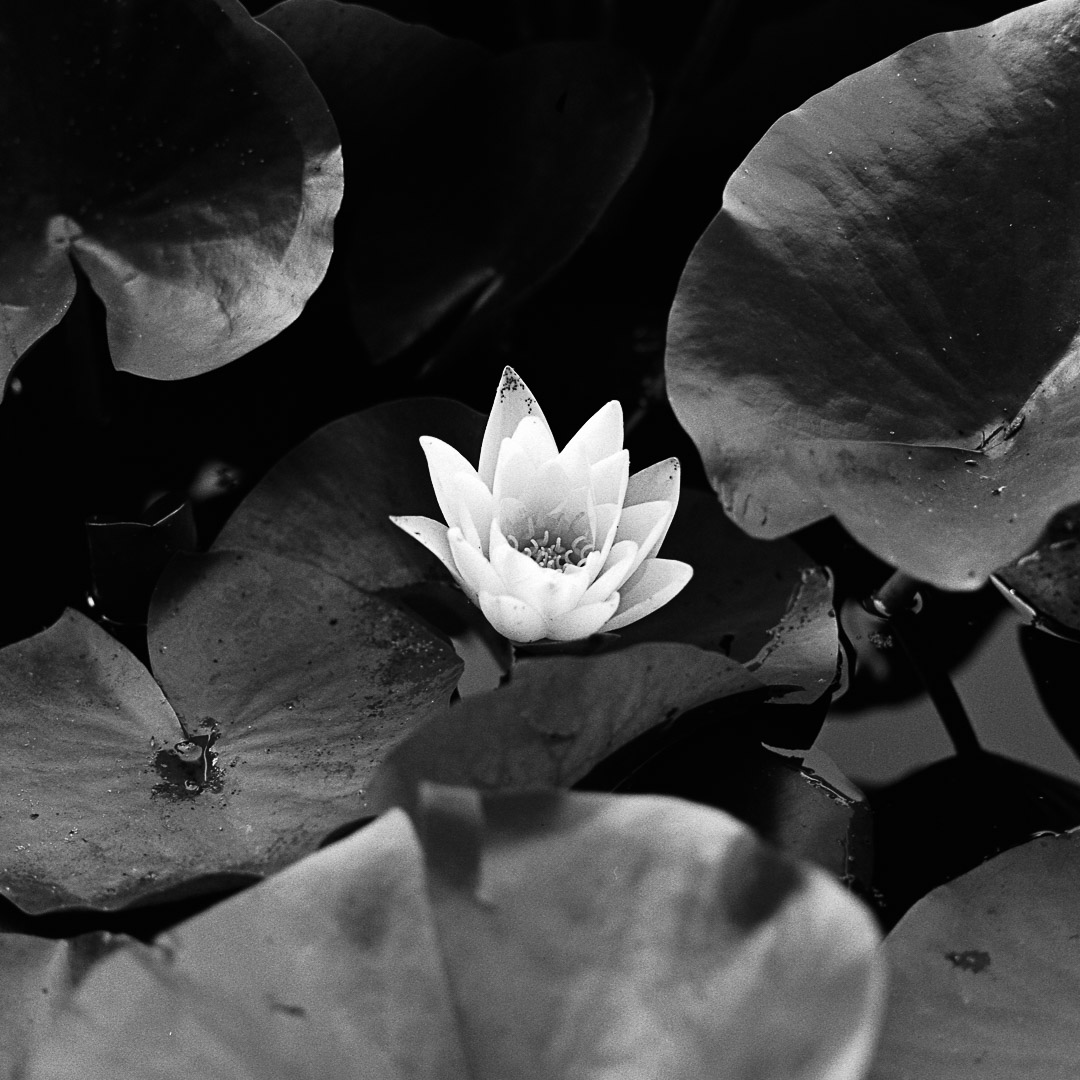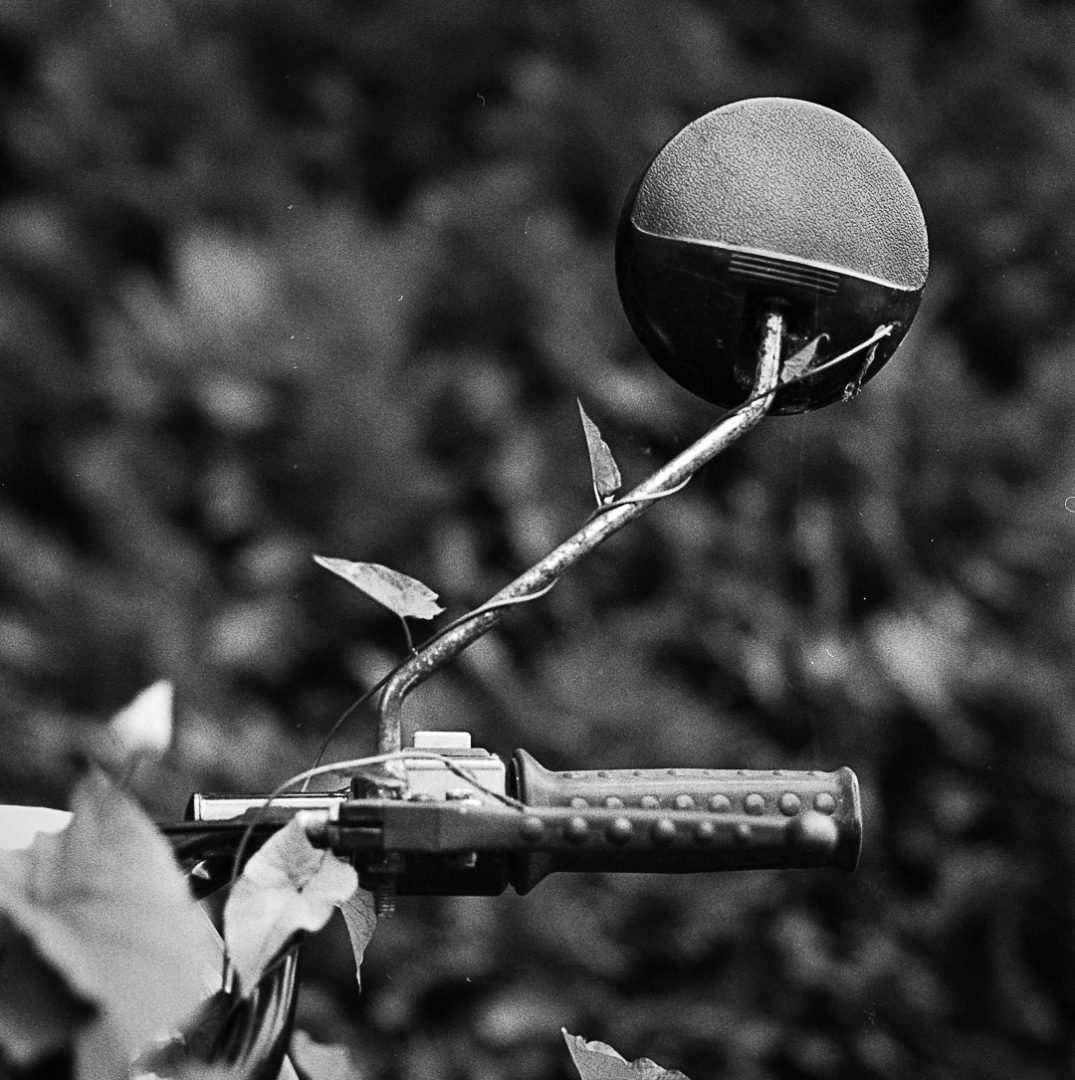When you’re first starting out with developing your own black and white film at home, you’ll quickly find that there is a seemingly endless variety of film developer options available. Fixers and stop baths all perform approximately the same (with a few technical differences that you can find out about here).
But film developers all perform a little bit different. Some of them can make dramatic changes in the look of your images. DD-X is one of the most common, and most expensive developers on the market.
So, is Ilford’s Ilfotec DD-X a good black and white film developer?
Ilfotec DD-X is the best developer for developing B&W film that is ISO 400 and above. This liquid-concentrate developer enhances shadow details, and creates images with rich tonality, making it one of the top options for pushing film without creating overly-grainy images.
Because of its performance, DD-X is one of the most common developers found at professional film labs around the world for a simple reason: this is the developer that will give photographers the best negatives even in challenging lighting scenarios. In my own uses, I’ve found DD-X to be the absolute best developer for pushing and pulling, especially with t-grain films like Ilford Delta 3200 and Kodak P3200.
The only downside of DD-X is that it is the most expensive developer to use. Depending where you get it, a bottle will cost over $25, but only develops 10 cycles — meaning 20 rolls of 35mm, or 10 rolls of 120, costing between $2.50 and $1.25 per roll. It is possible to reuse, although results will vary.

| Characteristics | Enhances shadow detail, pushes extremely well, low-grain (slight solvent effect), rich tonality |
| Lifespan | 6 months after opening (3 months if half full) |
| Format | Liquid Developer |
| Dilution | 1+4 |
| Cost | Greater than $1.25 per 35mm roll (one of the most expensive) |
| Developing agents | Hydroquinone, Borax, Dimezone (according to the MSDS) |
What does DD-X do best?
Ilfotec DD-X is one of the very best film developers for pushing film. This developer is the perfect balance between solvent action (reducing the size of grains) and shadow enhancement.
The solvent action in DD-X is fairly low compared to developers like HC-110, D-76, and ID-11, which can cause a noticeable reduction in image sharpness.
The low solvent action and enhanced shadows make this especially useful for fast films like Ilford Delta 3200, where it will reduce the grains just enough to have a pleasing appearance without eating the grains and lowering the film’s speed.
The main reason why this developer is still on the shelves today is because of just how good the results are with faster films. Which I’ve found to be true in my own use as well — the day that I truly started loving Ilford Delta 3200 was the once I started developing it with DD-X. The results were stunning compared to what I was used to getting with HC-110.
But the benefits of DD-X also extend to lower ISO film stocks, like Ilford HP5 and Tri-X. DD-X is one of the best developers for increasing the amount of detail in the shadows on film, which is a particularly useful trait when pushing film, because it’ll make flatter negatives. HP5 in particular can be treated as if it were ISO 800 film and show remarkably little difference when developed with DD-X.
In fact, the only developer on the market that pushes film better is Ilford’s Microphen, which is a niche developer that comes in powdered format rather than liquid.
That said, lower ISO films, like Tmax 100, or FP4 are less likely to benefit from these effects.
Perhaps the best part about using DD-X, is that it gives users the maximum amount of tonality on their negatives. That means that the negatives will look relatively flat when compared to other developers like Rodinal or pyro-based developers. But in return, you’ll get negatives that can be edited to create the desired level of contrast.
You can always add more contrast, but removing it is much harder.

What are the downsides of DD-X?
The biggest problem that I’ve run into with DD-X is the cost. As great as this film developer is, it’s the most expensive black and white developer on the market.
A single 1L bottle isn’t that expensive, but when you consider that it requires a 1+4 dilution, that means you’re only getting 10 cycles out of a single bottle. For example, Rodinal, which usually comes in a 500ml bottle at a cheaper price, can develop up to 50 rounds, totaling 100 rolls of 35mm film — all in a solution that doesn’t expire over time. That’s why I always recommend Rodinal (or Blazinal in Canad) to be the first film developer for new film photographers.
DD-X, on the other hand, only lasts 6 months after opening and is rated for just 3 months once it gets down to a half bottle. Luckily it’s fairly quick to get through a bottle of DD-X, so there’s a much smaller likelihood of letting it go to waste than other developers.
The last downside is that DD-X is not an environmentally-friendly chemical. Like most developers, DD-X made from the phenols dimezone and hydroquinone, which come from the petrochemical industry. It’s not safe to place in a septic tank and is known to be toxic to aquatic life downstream.
Learn more about how to handle film chemical waste here.

What is the difference between Infotec DD and DD-X?
If you’ve looked at developing times on the Massive Dev Chart, you’ll have certainly noticed there is a developer called Ilfotec DD. DD is actually the same developer as DD-X, though it is formulated for use in labs where it’s possible to replenish the developer after each use.
Labs often have different requirements for film developers than users at home, which often require some sort of reformulation to make them more resistant to oxygen. It may be possible to find Ilfotec DD, though you won’t likely be able to get it off the shelf at your local film retailer.

Final thoughts

I’ve developed hundreds of rolls of film over the last couple of years, and DD-X has been by far my favorite developer for most of that time. The results that this solution gets are second to none with faster films, which is one of the major reasons why I almost always keep a bottle of it on my shelf to this day.
However, because of the cost of the developer and the environmental impact, I have actually switched over mostly to using the Black, White, and Green film developer by Flic Film, which lasts longer after opening, and has pretty similar results.
If you’re the type of photographer who often pushes your film and likes having a liquid developer, DD-X is going to be one of the best developer choices. DD-X will not let you down, no matter what kind of lighting you throw at your negatives.
Even if you miss exposure by a stop or two, this developer will still make sure you come away with good negatives. And that’s coming from someone who knows — I’m certainly not the most careful when it comes to getting the right exposure on film.

By Daren
Daren is a journalist and wedding photographer based in Vancouver, B.C. He’s been taking personal and professional photos on film since 2017 and began developing and printing his own photos after wanting more control than what local labs could offer. Discover his newest publications at Soft Grain Books, or check out the print shop.
